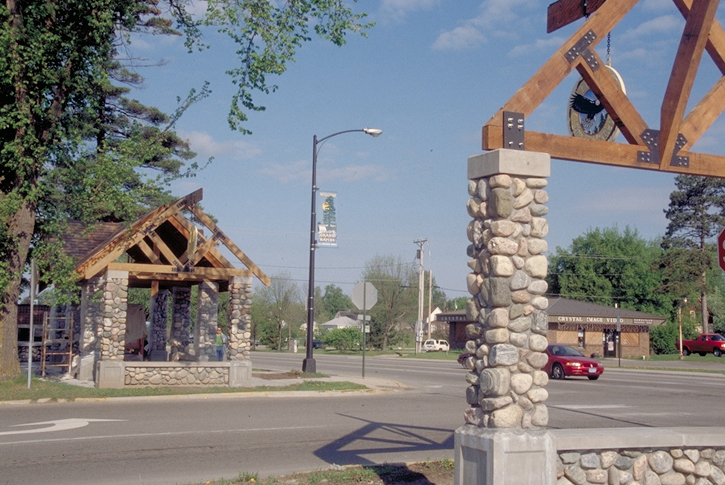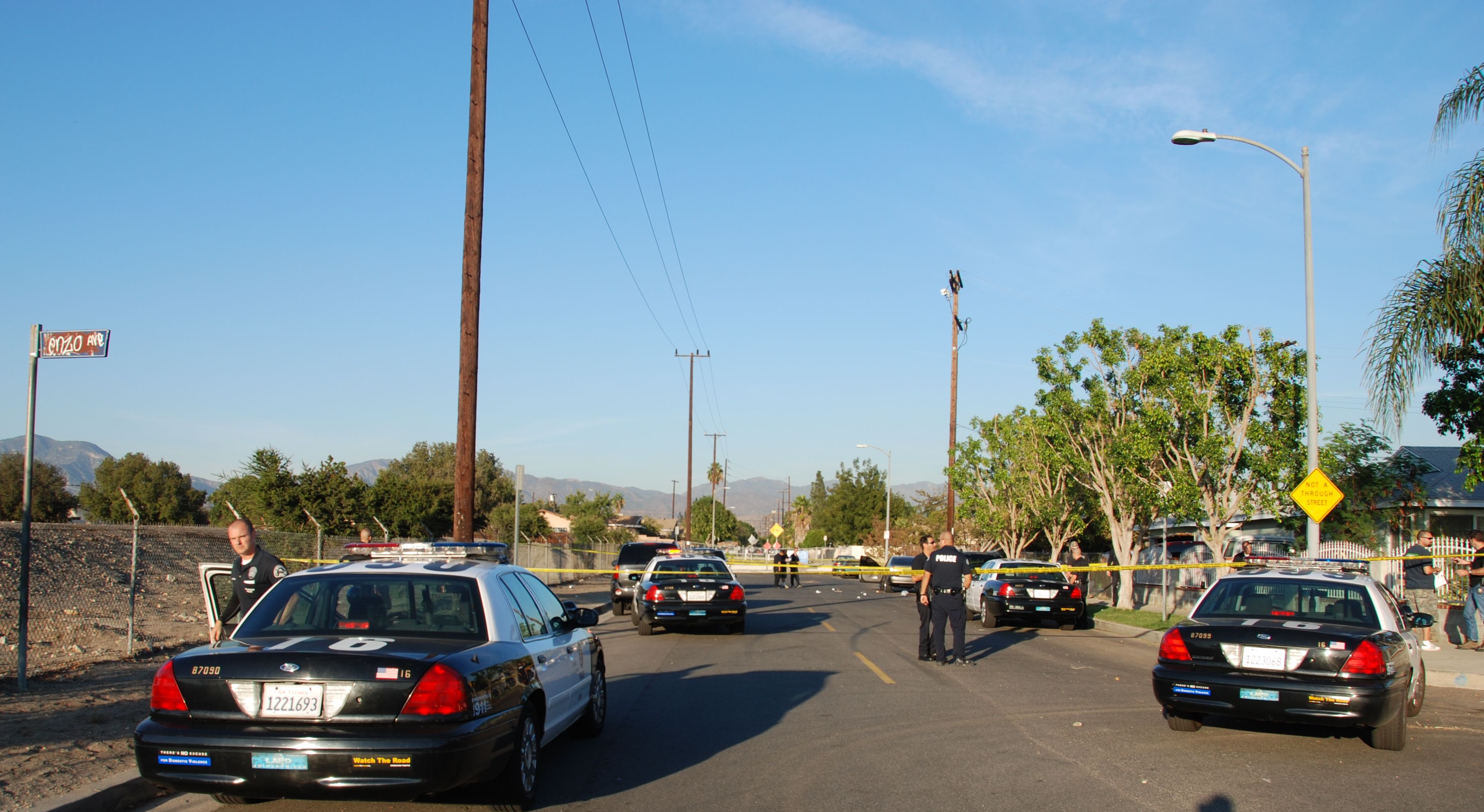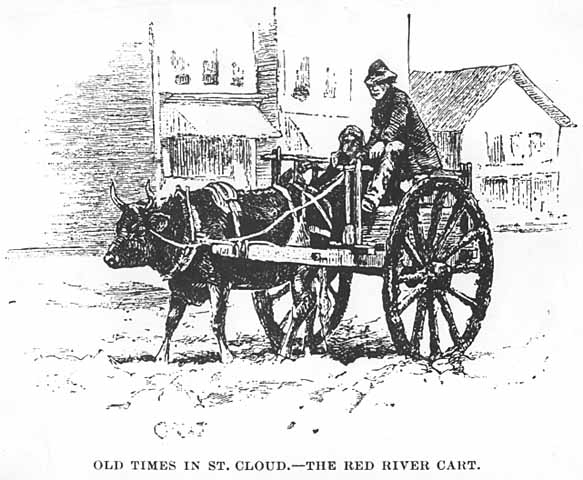|
Minnesota Bureau Of Criminal Apprehension
The Minnesota Bureau of Criminal Apprehension (BCA) is a statewide criminal investigative bureau under the Minnesota Department of Public Safety that provides expert forensic science and criminal investigation services throughout the state of Minnesota. The BCA assists local, state, tribal, and federal agencies in major criminal investigations. It is headquartered in St. Paul. The BCA's current superintendent is Drew Evans. History The Bureau of Criminal Apprehension (BCA) was created by the Minnesota Legislature in 1927 in order to assist police departments statewide to solve crimes and apprehend criminals, under the direction of the Minnesota Attorney General's office. The BCA gathers crime statistics to assist state and local agencies to identify criminal trends. In 1935, agents received full police power and were licensed police officers throughout the state. In 1947, the BCA Crime Lab was established in St. Paul to assist in solving of crimes via forensic science, and was ... [...More Info...] [...Related Items...] OR: [Wikipedia] [Google] [Baidu] |
Minnesota
Minnesota () is a state in the upper midwestern region of the United States. It is the 12th largest U.S. state in area and the 22nd most populous, with over 5.75 million residents. Minnesota is home to western prairies, now given over to intensive agriculture; deciduous forests in the southeast, now partially cleared, farmed, and settled; and the less populated North Woods, used for mining, forestry, and recreation. Roughly a third of the state is covered in forests, and it is known as the "Land of 10,000 Lakes" for having over 14,000 bodies of fresh water of at least ten acres. More than 60% of Minnesotans live in the Minneapolis–Saint Paul metropolitan area, known as the "Twin Cities", the state's main political, economic, and cultural hub. With a population of about 3.7 million, the Twin Cities is the 16th largest metropolitan area in the U.S. Other minor metropolitan and micropolitan statistical areas in the state include Duluth, Mankato, Moorhead, Rochester, and ... [...More Info...] [...Related Items...] OR: [Wikipedia] [Google] [Baidu] |
Grand Rapids, Minnesota
Grand Rapids is a city in Itasca County, Minnesota, United States, and it is the county seat. The population is 11,126 according to the 2020 census. The city is named for the long rapids in the Mississippi River which was the uppermost limit of practical steamboat travel during the late 19th century. Today the rapids are hidden below the dam of UPM Paper Company. History Grand Rapids became a logging town, as the Mississippi River provided an optimal method of log shipment to population centers. Blandin paper mill opened in 1902. The Forest History Center is a State Historic Site and a living history museum that recreates life as it was in a turn of the 20th century logging camp. Costumed interpreters guide visitors through a recreated circa 1890s logging camp to educate the public on the history of white pine logging and its relevance to today's economy. Miles of nature trails, educational naturalist programming, and an interpretive museum are also located on the site. Old ... [...More Info...] [...Related Items...] OR: [Wikipedia] [Google] [Baidu] |
Expert Witness
An expert witness, particularly in common law countries such as the United Kingdom, Australia, and the United States, is a person whose opinion by virtue of education, training, certification, skills or experience, is accepted by the judge as an expert. The judge may consider the witness's specialized (scientific, technical or other) opinion about evidence or about facts before the court within the expert's area of expertise, to be referred to as an "expert opinion". Expert witnesses may also deliver "expert evidence" within the area of their expertise. Their testimony may be rebutted by testimony from other experts or by other evidence or facts. History The forensic expert practice is an ancient profession. For example, in ancient Babylonia, midwives were used as experts in determining pregnancy, virginity and female fertility. Similarly, the Roman Empire recognized midwives, handwriting experts and land surveyors as legal experts. The codified use of expert witnesses and ... [...More Info...] [...Related Items...] OR: [Wikipedia] [Google] [Baidu] |
Forensic Data Analysis
Forensic Data Analysis (FDA) is a branch of Digital forensics. It examines structured data with regard to incidents of financial crime. The aim is to discover and analyse patterns of fraudulent activities. Data from application systems or from their underlying databases is referred to as structured data. ''Unstructured data'' in contrast is taken from communication and office applications or from mobile devices. This data has no overarching structure and analysis thereof means applying keywords or mapping communication patterns. Analysis of unstructured data is usually referred to as Computer forensics. Methodology The analysis of large volumes of data is typically performed in a separate database system run by the analysis team. Live systems are usually not dimensioned to run extensive individual analysis without affecting the regular users. On the other hand, it is methodically preferable to analyze data copies on separate systems and protect the analysis teams against the acc ... [...More Info...] [...Related Items...] OR: [Wikipedia] [Google] [Baidu] |
Crime Scene
A crime scene is any location that may be associated with a committed crime. Crime scenes contain physical evidence that is pertinent to a criminal investigation. This evidence is collected by crime scene investigators (CSI) and law enforcement. The location of a crime scene can be the place where the crime took place or can be any area that contains evidence from the crime itself. Scenes are not only limited to a location, but can be any person, place, or object associated with the criminal behaviours that occurred. After a crime scene has been discovered, measures must be taken to secure and protect the scene from contamination. To maintain the integrity of the scene, law enforcement must take action to block off the surrounding area as well as keep track of who comes in and goes out. By taking these precautions, officers can ensure that evidence that is collected can be used in court. Evidence that has become contaminated, tampered with, or mistreated can pollute the scene an ... [...More Info...] [...Related Items...] OR: [Wikipedia] [Google] [Baidu] |
DNA Profiling
DNA profiling (also called DNA fingerprinting) is the process of determining an individual's DNA characteristics. DNA analysis intended to identify a species, rather than an individual, is called DNA barcoding. DNA profiling is a forensic technique in criminal investigations, comparing criminal suspects' profiles to DNA evidence so as to assess the likelihood of their involvement in the crime. It is also used in paternity testing, to establish immigration eligibility, and in genealogical and medical research. DNA profiling has also been used in the study of animal and plant populations in the fields of zoology, botany, and agriculture. Background Starting in the 1980s, scientific advances allowed the use of DNA as a material for the identification of an individual. The first patent covering the direct use of DNA variation for forensicsUS5593832A was filed by Jeffrey Glassberg in 1983, based upon work he had done while at Rockefeller University in the United States in 1981. ... [...More Info...] [...Related Items...] OR: [Wikipedia] [Google] [Baidu] |
Forensic Science
Forensic science, also known as criminalistics, is the application of science to criminal and civil laws, mainly—on the criminal side—during criminal investigation, as governed by the legal standards of admissible evidence and criminal procedure. Forensic science is a broad field that includes; DNA analysis, fingerprint analysis, blood stain pattern analysis, firearms examination and ballistics, tool mark analysis, serology, toxicology, hair and fiber analysis, entomology, questioned documents, anthropology, odontology, pathology, epidemiology, footwear and tire tread analysis, drug chemistry, paint and glass analysis, digital audio video and photo analysis. Forensic scientists collect, preserve, and analyze scientific evidence during the course of an investigation. While some forensic scientists travel to the scene of the crime to collect the evidence themselves, others occupy a laboratory role, performing analysis on objects brought to them by other individuals. Still ... [...More Info...] [...Related Items...] OR: [Wikipedia] [Google] [Baidu] |
Amber Alert
An Amber Alert (alternatively styled AMBER alert) or a child abduction emergency alert ( SAME code: CAE) is a message distributed by a child abduction alert system to ask the public for help in finding abducted children. The system originated in the United States. AMBER is a backronym standing for America's Missing: Broadcast Emergency Response. It was created in reference to Amber Rene Hagerman, a girl who was abducted and later found murdered in 1996. Alternative regional alert names were once used; in Georgia, "Levi's Call" (in memory of Levi Frady); in Hawaii, "Maile Amber Alert" (in memory of Maile Gilbert); in Arkansas, "Morgan Nick Amber Alert" (in memory of Morgan Nick); and in Utah, "Rachael Alert" (in memory of Rachael Runyan). In the United States, Amber alerts are distributed via commercial and public radio stations, Internet radio, satellite radio, television stations, text messages, and cable TV by the Emergency Alert System and NOAA Weather Radio (where they ... [...More Info...] [...Related Items...] OR: [Wikipedia] [Google] [Baidu] |
Willmar, Minnesota
Willmar is a city in, and the county seat of, Kandiyohi County, Minnesota, United States. The population was 21,015 at the 2020 census. History Agricultural expansion and the establishment of Willmar as a division point on the Great Northern Railway determined its growth. The first settlers arrived during the 1850s, attracted to the fertile land and an abundance of timber and game. The Dakota War of 1862 left the township abandoned for several years. The advent of the railroad in Kandiyohi County in 1869 brought new settlers. Many were of Swedish and Norwegian origin; residents of Scandinavian heritage are still a majority. In 1870, Leon (Chadwick) Willmar, a Belgian acting as an agent for the European bondholder of the St. Paul and Pacific Railroad, purchased the title to Section 1 of Willmar Township. Willmar was established as the county seat in 1871 and was incorporated as a village in 1874 and as a city in 1901. Willmar was the site of a bank robbery by the Machine Gun ... [...More Info...] [...Related Items...] OR: [Wikipedia] [Google] [Baidu] |
Saint Cloud, Minnesota
St. Cloud is a city in the U.S. state of Minnesota and the largest population center in the state's central region. The population was 68,881 at the 2020 census, making it Minnesota's 12th-largest city. St. Cloud is the county seat of Stearns County and was named after the city of Saint-Cloud, France (in Île-de-France, near Paris), which was named after the 6th-century French monk Clodoald. Though mostly in Stearns County, St. Cloud also extends into Benton and Sherburne counties, and straddles the Mississippi River. It is the center of a contiguous urban area, with Waite Park, Sauk Rapids, Sartell, St. Joseph, Rockville, and St. Augusta directly bordering the city, and Foley, Rice, Kimball, Clearwater, Clear Lake, and Cold Spring nearby. The St. Cloud metropolitan area had a population of 199,671 at the 2020 census. It has been listed as the fifth-largest metro with a presence in Minnesota, behind Minneapolis–St. Paul, Duluth–Superior, Fargo-Moorhead, and ... [...More Info...] [...Related Items...] OR: [Wikipedia] [Google] [Baidu] |
Roseau, Minnesota
Roseau () (pronounced row - so) is a city in, and the county seat of, Roseau County, Minnesota. Its population was 2,744 at the time of the 2020 census. History A post office called Roseau has been in operation since 1895. The city took its name from the nearby Roseau River. Geography According to the United States Census Bureau, the city has a total area of , all land. Hayes Lake State Park is nearby. Climate Roseau has a humid continental climate (Köppen climate classification ''Dfb'') with warm summers and severely cold winters. Precipitation is significantly higher in summer than at other times of the year. Demographics 2010 census As of the census of 2010, there were 2,633 people, 1,142 households, and 682 families living in the city. The population density was . There were 1,288 housing units at an average density of . The racial makeup of the city was 97.6% White, 0.3% African American, 0.6% Native American, 0.4% Asian, 0.1% from other races, and 0.9% from two o ... [...More Info...] [...Related Items...] OR: [Wikipedia] [Google] [Baidu] |
Rochester, Minnesota
Rochester is a city in the U.S. state of Minnesota and the county seat of Olmsted County. Located on rolling bluffs on the Zumbro River's south fork in Southeast Minnesota, the city is the home and birthplace of the renowned Mayo Clinic. According to the 2020 census, the city had a population of 121,395, making it Minnesota's third-largest city. The Rochester metropolitan area, which also includes the nearby rural agricultural areas, has a population of 226,329. History Rochester was established by white settlers from the eastern United States on land belonging to the Wahpeton tribe who were a part of the alliance called Oceti Ŝakowiŋ — The Seven Council Fires.Minnesota Historical Society, "The Seven Council Fires," URL: https://www.mnhs.org/sevencouncilfires, last accessed November 17, 2021 Within the Seven Council Fires, the Wahpeton people were a part of the Santee or Eastern Dakota tribe. The area developed as a stagecoach stop between Saint Paul, Minnesota, and ... [...More Info...] [...Related Items...] OR: [Wikipedia] [Google] [Baidu] |







.jpg)
